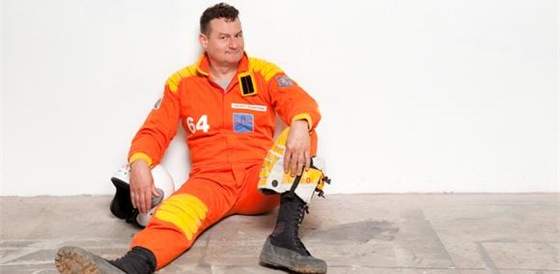Adam Norton: Interplanetary Society
Art from when answers seemed to come from beyond the stars.
Overview
Adam Norton's work often been interested in space exploration – not so much the scientific realities, but how we talk and think about it, the fictions we build up around it. In 2011, he was commissioned to create the Mars Gravity Simulator where audience members could test their ability to move in the gravity conditions found on Mars. It spanned the divide between science and art, serious endeavour and playground fantasy.
The other recurring theme in Norton's work has been a fascination with the divide between military and scientific institutions and everyday life. In Camouflage suit experiment, he fashioned military wear out of domestic goods and tested them out around the Sutherland shire. The Tank Project meanwhile unleashed armoured carriers into the back alleys and laneways of Sydney's CBD to the bemusement of office workers who discovered them on their lunch breaks.
Norton's new exhibition, Interplanetary Society touches on both these themes, recreating the covers of a range long-forgotten books which tapped into the Apollo era interest and optimism around space travel. Neither part of the official record nor conveying much in the way of establishment approval or credibility, the books instead capture a yearning for something more, a dissatisfaction with earthbound life and the now quaint-seeming belief that solutions to all our problems may lay beyond the stars.
Norton, a sydney-based artist, has revived these titles from obscurity in striking works of vinyl on paper and acryclic on canvas which convey a wide-eyed buoyancy and an interest in UFOs and possibilities of other life forms. Amongst the titles recreated is Irving Adler's 'Man-Made Moons' , where a moon floats on a sea of deep blue and Mars, Percival Lowell's earnest survey of the canals and oases of the red planet. Most of the works show the straightforward confidence of Hollywood action posters or video game adverts, remnants of an unshakeable belief in what space travel would bring. There are a couple of more reflective works, though, with the downbeat astronaut in We Are Not The First a rare concession that the mysteries of space may not easily reveal themselves. Perhaps the key work though splashes the words We Are Not Alone across the canvas.
Gallery 9 is open Wednesday to Saturday, 11- 6. Photo by Simon Hewson.





